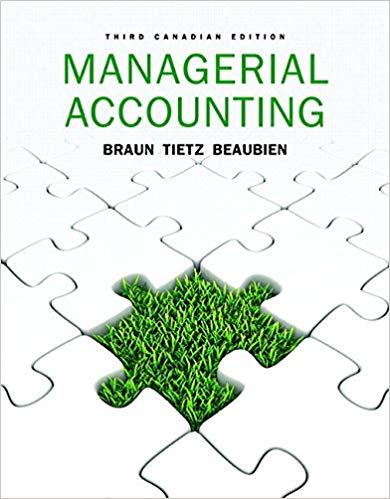Question
Case Study - Under Garmour Pty Ltd Introduction In October 2020, Stephanie Ng, an audit partner at Smit & Ng Accounting (S&N), a second-tier auditing




Case Study - Under Garmour Pty Ltd
Introduction
In October 2020, Stephanie Ng, an audit partner at Smit & Ng Accounting (S&N), a second-tier auditing firm based in Melbourne evaluated and recommended accepting a new audit client, Under Garmour Pty Ltd. Under Garmour Pty Ltd is a medium sized unlisted retail trading company operating in several parts of Victoria. Stephanie evaluated the client and assessed S&N's independence as well as competence to carry out the audit. S&N issued an engagement letter for the audit. Alicia Jones was assigned as an audit manager in charge of planning and supervising the conduct of the Under Garmour Pty Ltd audit.
Under Garmour Pty Ltd's background
Under Garmour Pty Ltd is a retailer of active wear garments. It operates with seven warehouses based in Victoria, New South Wales and Western Australia. The company was established as a small family business in 1980 in Melbourne and has gradually grown in size. Under Garmour Pty Ltd has a large outstanding long-term loan from Eastern Bank. The loan agreement requires Under Garmour Pty Ltd to submit its audited financial statements to East Bank by January 31 of every year until the loan is fully paid.
Under Garmour Pty Ltd has a board of directors comprising of five members. Two of the members of the board of directors are newly appointed members as previous two members resigned during the 2020 financial year. The Directors and CEO receive a fixed full-time salary plus bonuses based on the company's net asset position and profit after tax amounts. The company does not have an audit committee. Under Garmour Pty Ltd's internal audit manager reports to the board of directors. All major transaction cycles, e.g., sales, purchases, payroll, etc. are supported by off-the-shelf software packages that have been sufficiently tested in the market. Under Garmour Pty Ltd employees receive necessary training on the computer systems before being assigned to their duties.
Under Garmour Pty Ltd markets its products by emphasizing that it is a socially responsible organisation and highlighting its moral commitment to sell only products that have minimal impact on the environment and the suppliers do not exploit their employees for a profit. This policy was introduced largely because, Jake Miller, a major shareholder with a controlling vote had advocated for it. Mr. Miller also has a major input on all policy decisions of Under Garmour Pty Ltd.
Under Garmour Pty Ltd's major product lines include tee-shirts, sweatshirts and pants. In addition, the company also sells other accessories such as towels and headbands. Most of the suppliers are based overseas. The suppliers based overseas are paid in US Dollars whilst the local suppliers are paid in Australian Dollars. Under Garmour Pty Ltd sells its products through retail stores and online via its website. In recent years, Under Garmour Pty Ltd experienced a trend of decreasing sales through the retail stores but the online sales have been on the rise.
Under Garmour Pty Ltd pays higher prices for some of its products for which alternative products with better value-for-money could be found in the market. Under Garmour Pty Ltd pursues this strategy in order to maintain its commitment with its suppliers who also depend on Under Garmour Pty Ltd. With this spirit, the company also pays its suppliers in advance of placing purchase orders. This business practice has resulted in a large amount of advance payments to increasing number of suppliers worldwide.
Financials
Alicia and her team of three staff auditors formulated the audit plan during the first half of November 2020. This task involved conducting a risk assessment, determination of the overall audit strategy, setting a materiality threshold and identification of key areas of audit attention. Exhibits 1 and 2 below present information extracted from the working paper for Under Garmour Pty Ltd audit.
Required:
Assume that you are in the position of Alicia Jones. Based on the 31 December 2020 unaudited financial reports for Under Garmour Pty Ltd, generate a planning memorandum for the audit partner, Stephanie Ng, which includes the following:
(a) Results of analytical procedures. (Please include your workings in an appendix). You should generate a horizontal analysis and calculate key ratios. Identify and explain which changes in the horizontal analysis and which ratio results would trigger further investigation in the audit. Note: You are not required to conduct a ratio interpretation. You are to focus on the explanation of the ratios which would trigger further investigation.
(b) Your identification and explanation of four (4) inherent risks that you identify from the case study and the results of the analytical procedures performed.
(c) Identification of a key account and a key related assertion at risk of material misstatement based on the inherent risks you identify in part (b). (Identify a key account and a key assertion for each of the four inherent risks identified in part (b))




Step by Step Solution
There are 3 Steps involved in it
Step: 1

Get Instant Access to Expert-Tailored Solutions
See step-by-step solutions with expert insights and AI powered tools for academic success
Step: 2

Step: 3

Ace Your Homework with AI
Get the answers you need in no time with our AI-driven, step-by-step assistance
Get Started


